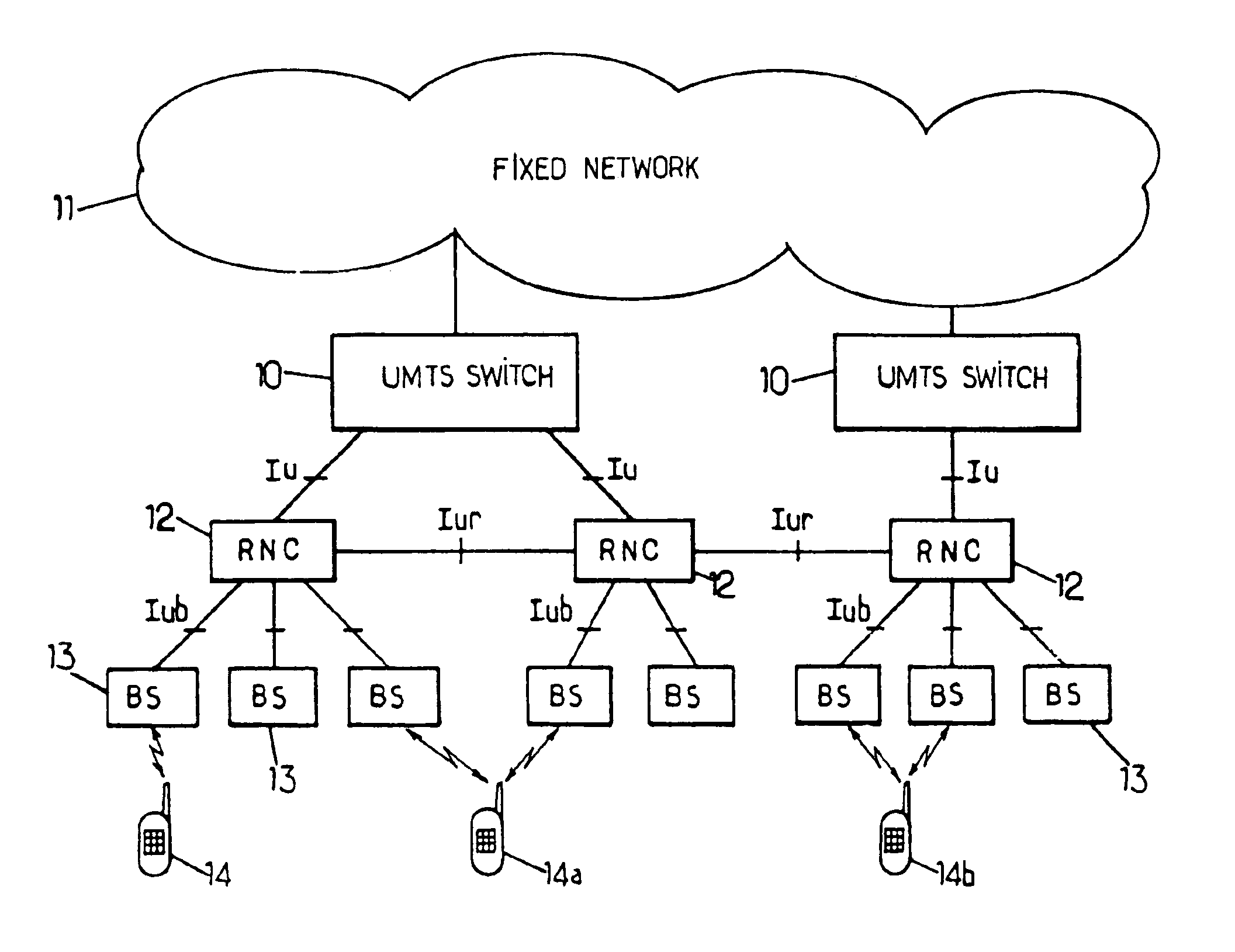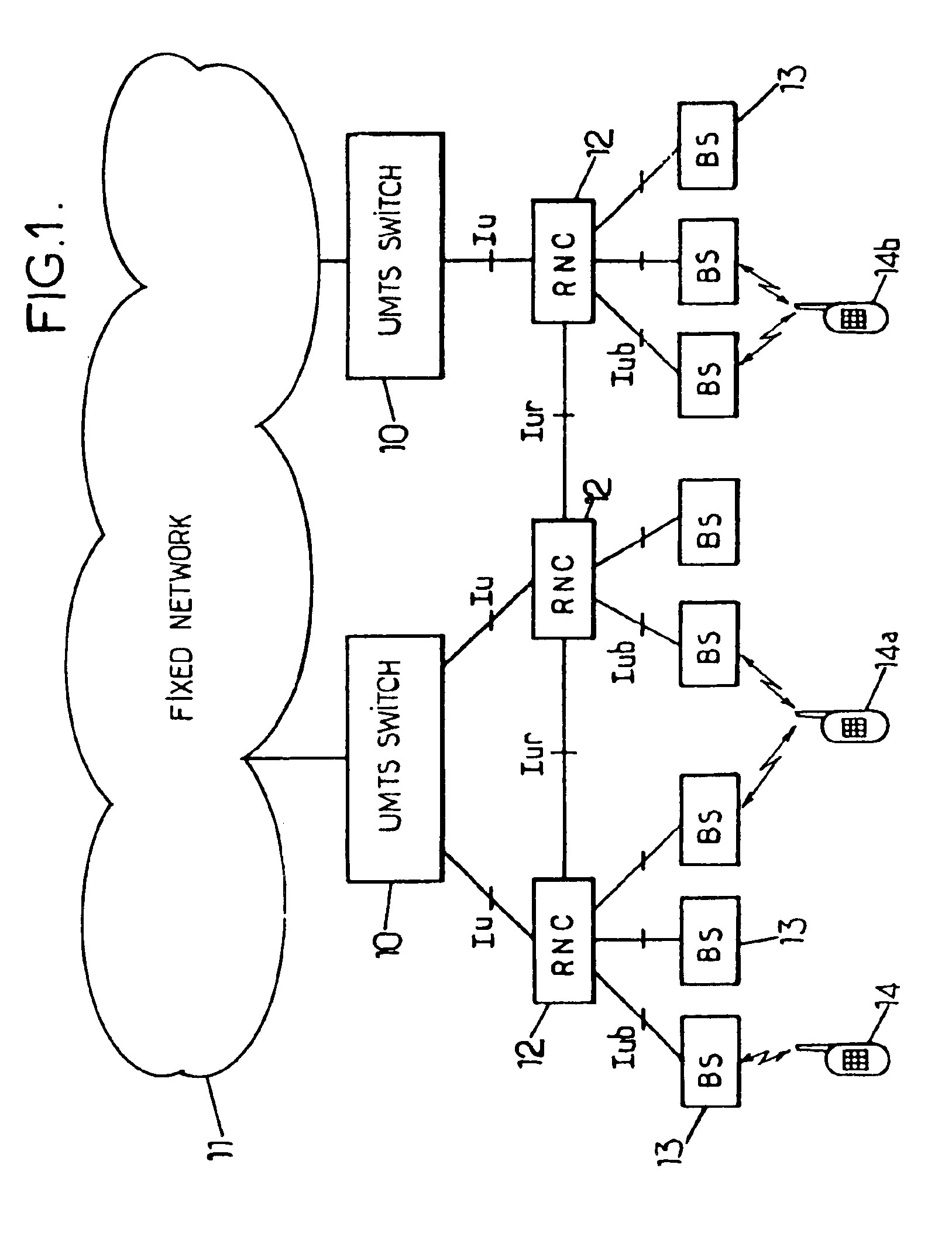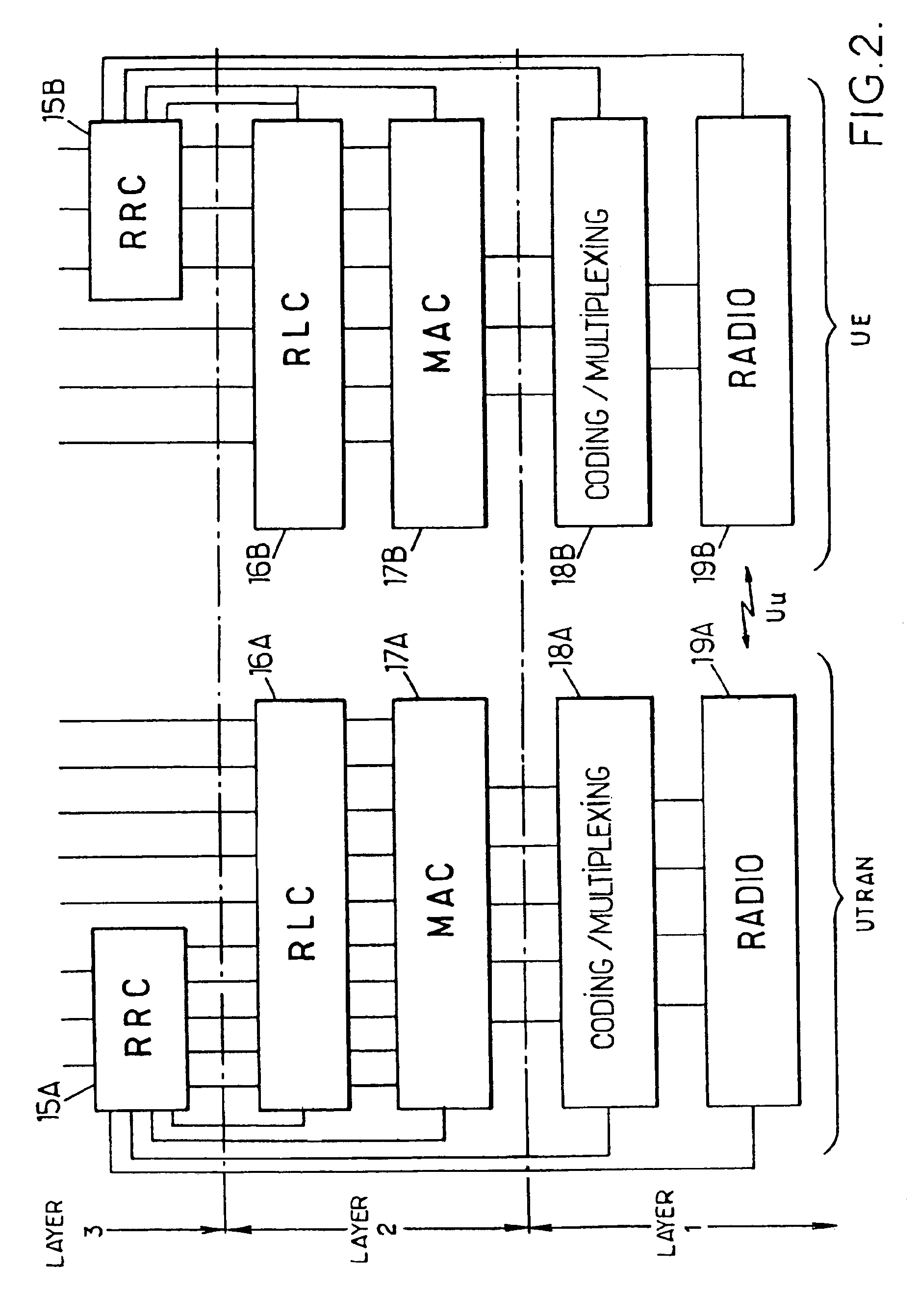Method of controlling a channel between a radio terminal and a cellular radiocommunication infrastructure, and access network implementing such a method
a radio terminal and radiocommunication infrastructure technology, applied in the field of radiocommunications, can solve the problems of not providing the most significant bits (hfn), not optimal, and using csn counters, so as to reduce the risk of obsolescence of adjustment data transmitted through the core network, reduce the duration of transmission, and simplify the procedure
- Summary
- Abstract
- Description
- Claims
- Application Information
AI Technical Summary
Benefits of technology
Problems solved by technology
Method used
Image
Examples
Embodiment Construction
[0076]FIG. 4 shows a UMTS network infrastructure for supporting the mode of macrodiversity between several SRNSs. The infrastructure sketched has a deliberately simplified configuration to clarify the explanation of the invention. The core network comprises a mobile service switch (MSC, “Mobile service Switching Centre”) 30 for the circuit mode, linked by Iu interfaces to two radio network subsystems (SRNS) each having an RNC 40, 41. The two RNCs 40, 41 communicate with one another via an Iur interface and respectively monitor base stations 50, 51 (node B) through Iub interfaces.
[0077]FIGS. 5 to 8 show active communication paths between the core network and UE 14 when the latter is moving. In the situation of FIG. 5, a first path has been established in a conventional manner between the MSC 30 and the UE 14 through the RNC 40 playing the role of SRNC and the base station 50. The SRNC 40 and the UE each have an MAC instance which, for each dedicated logical channel in circuit mode an...
PUM
 Login to View More
Login to View More Abstract
Description
Claims
Application Information
 Login to View More
Login to View More - R&D
- Intellectual Property
- Life Sciences
- Materials
- Tech Scout
- Unparalleled Data Quality
- Higher Quality Content
- 60% Fewer Hallucinations
Browse by: Latest US Patents, China's latest patents, Technical Efficacy Thesaurus, Application Domain, Technology Topic, Popular Technical Reports.
© 2025 PatSnap. All rights reserved.Legal|Privacy policy|Modern Slavery Act Transparency Statement|Sitemap|About US| Contact US: help@patsnap.com



